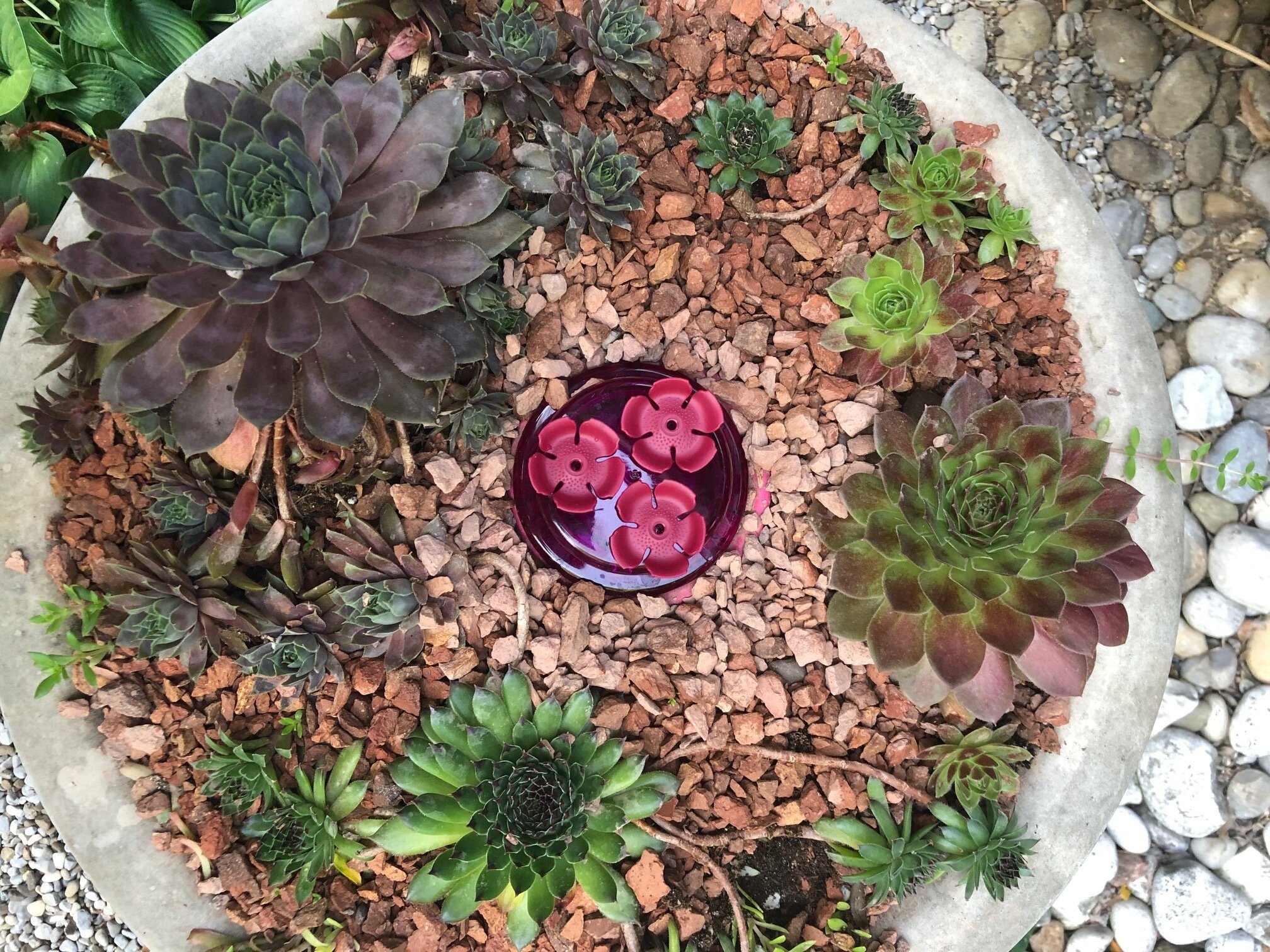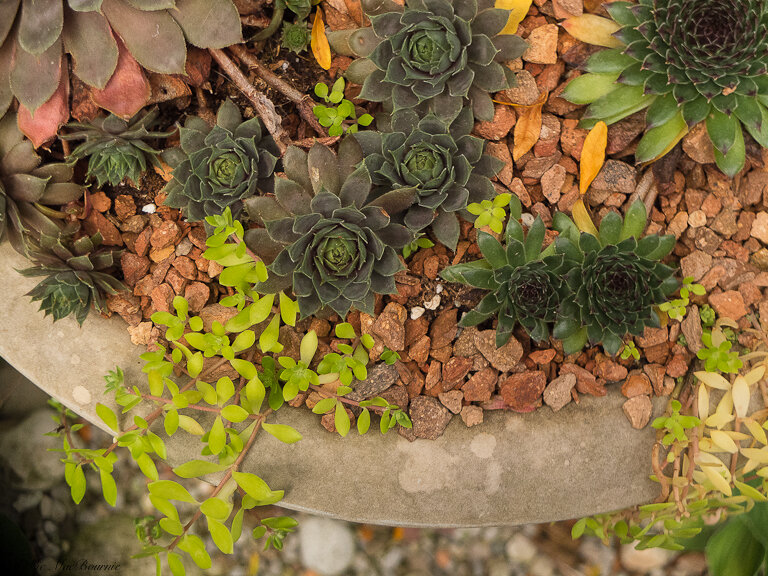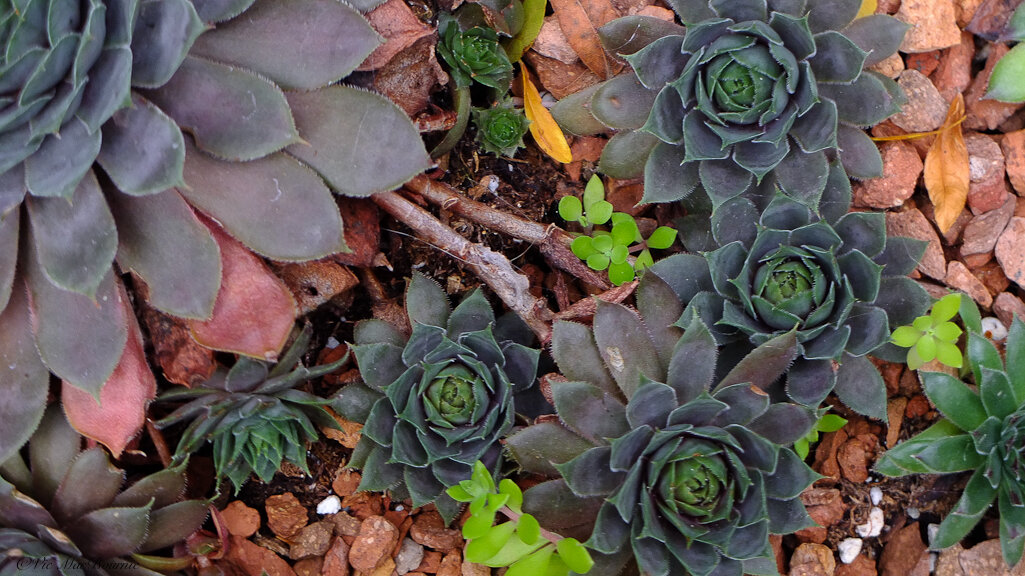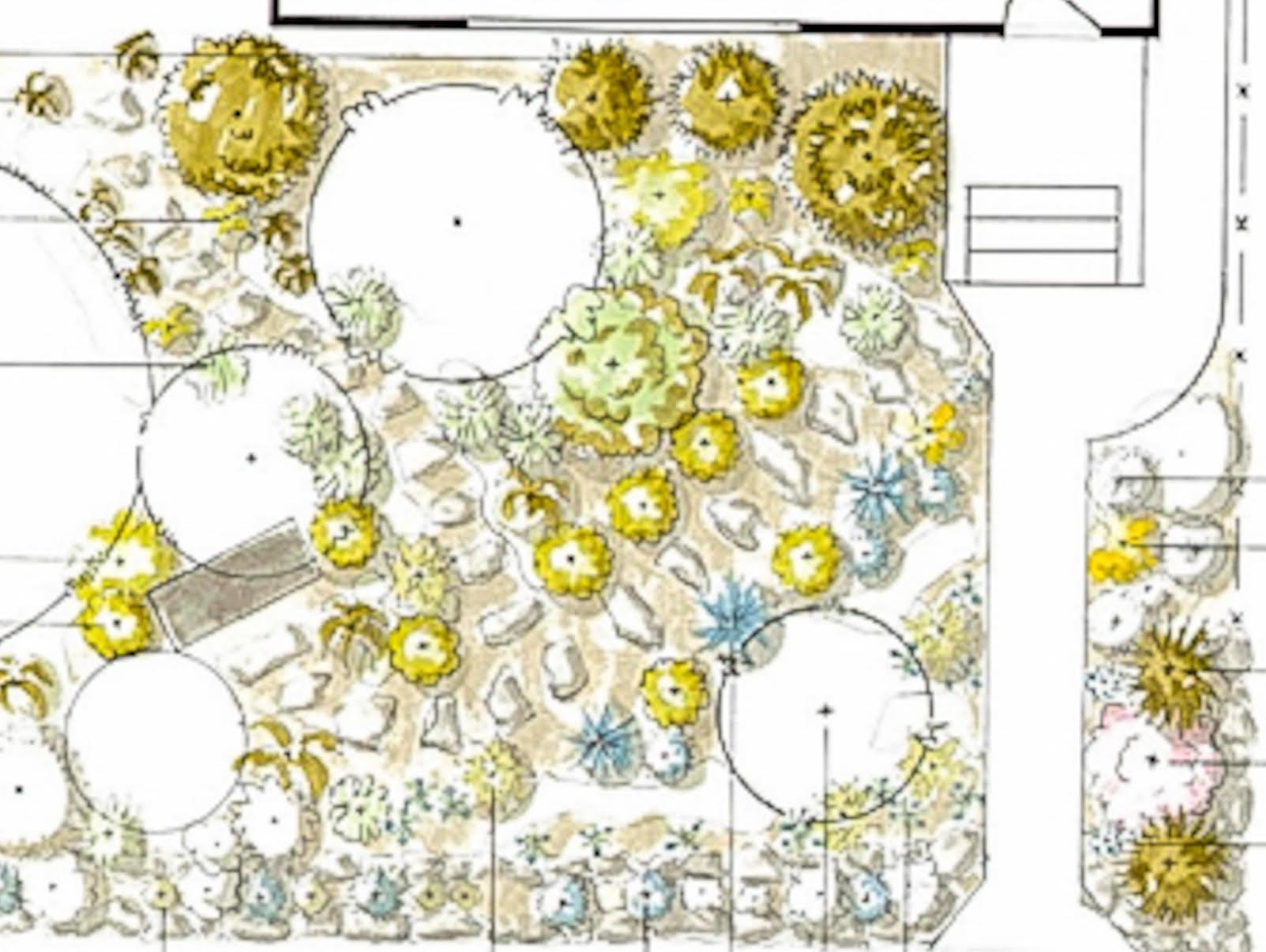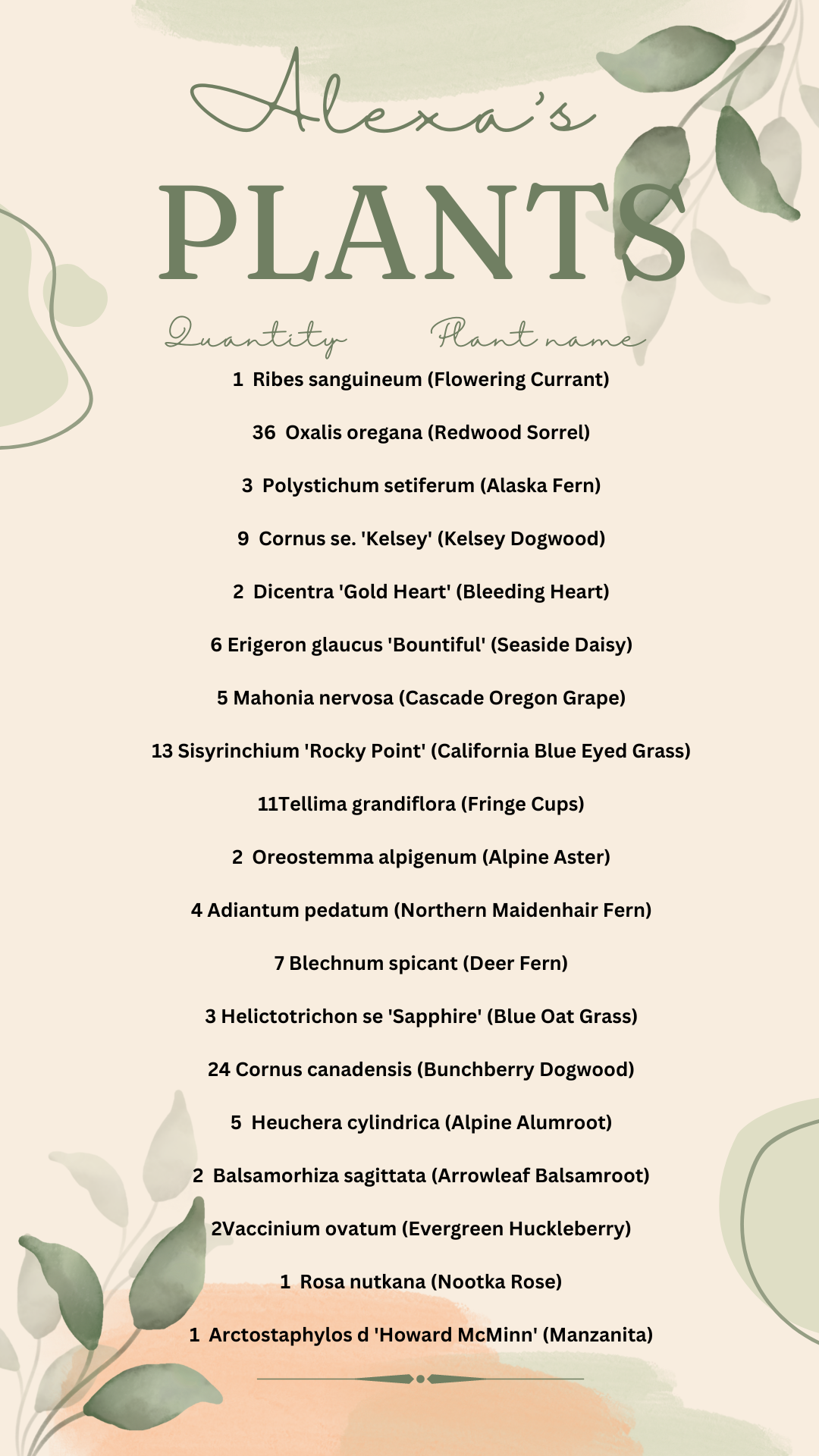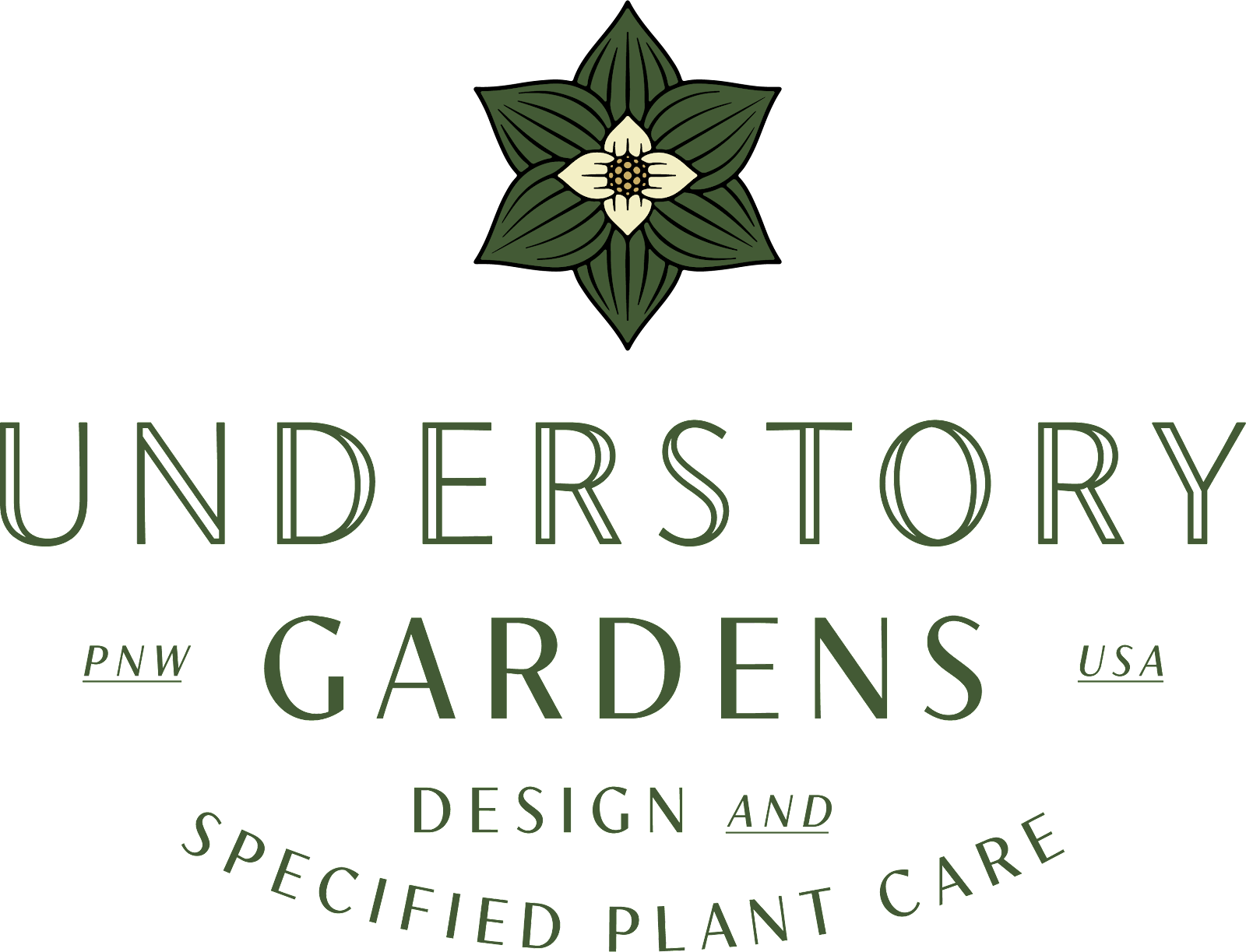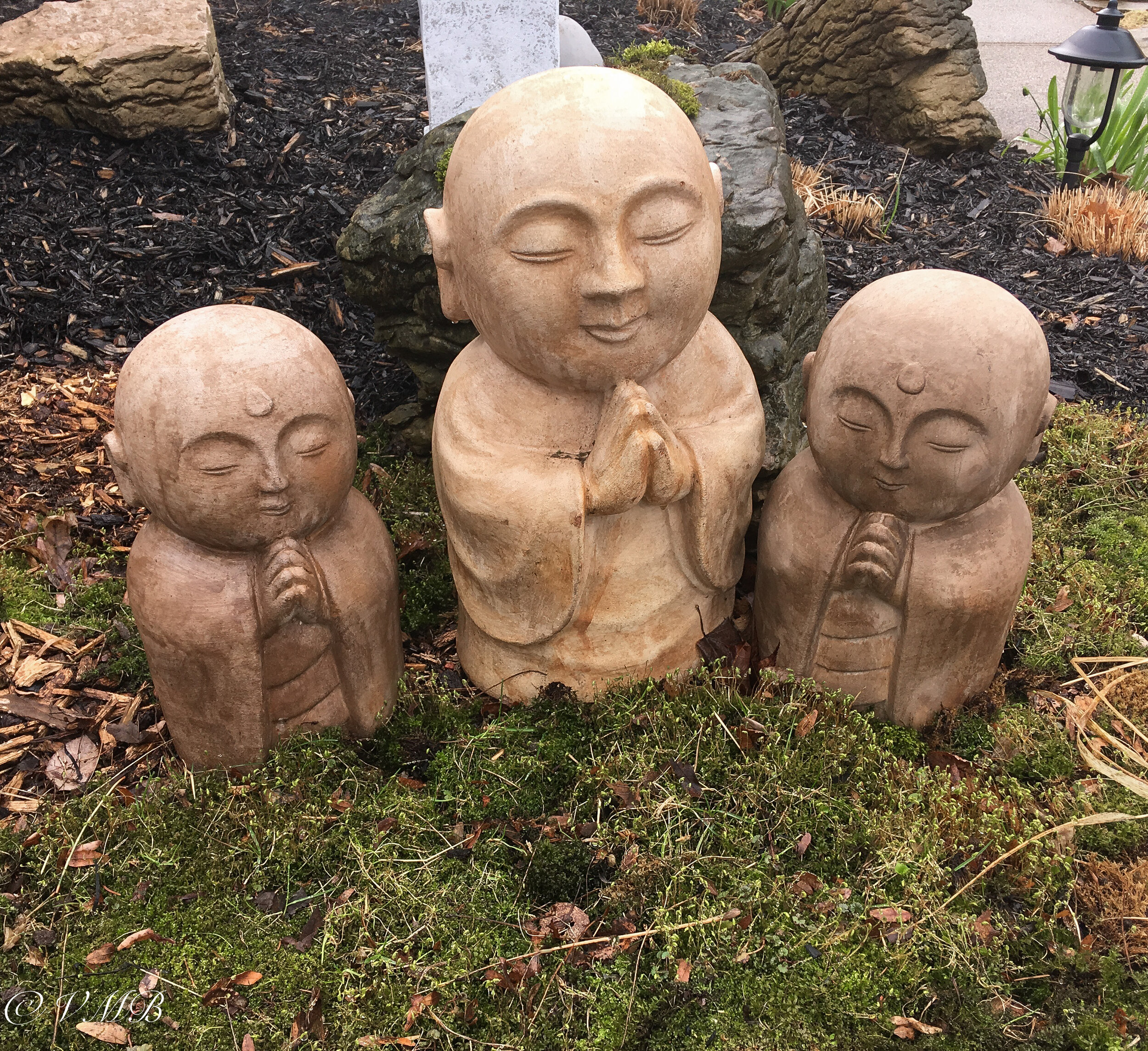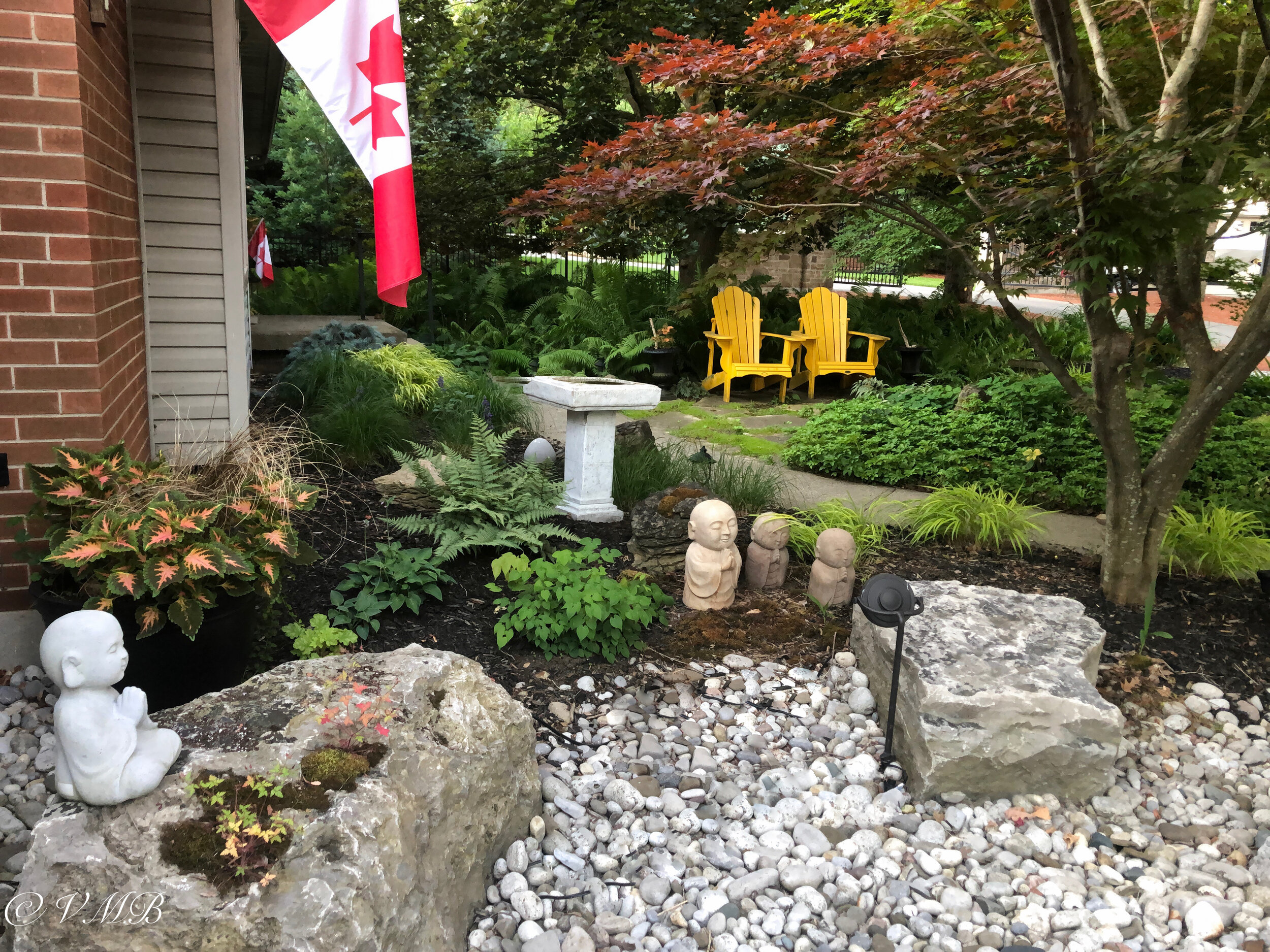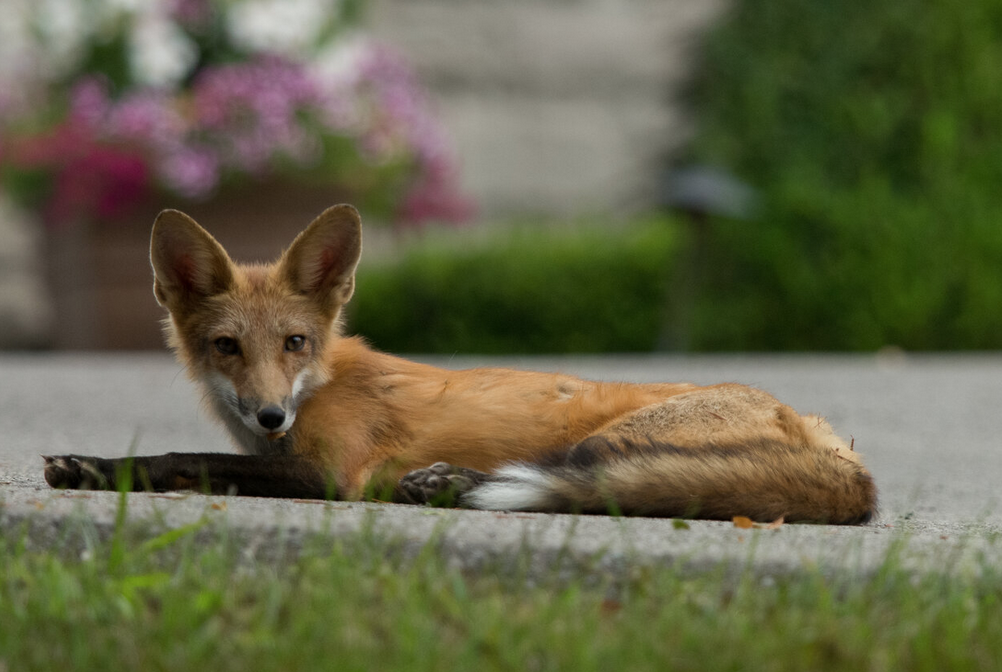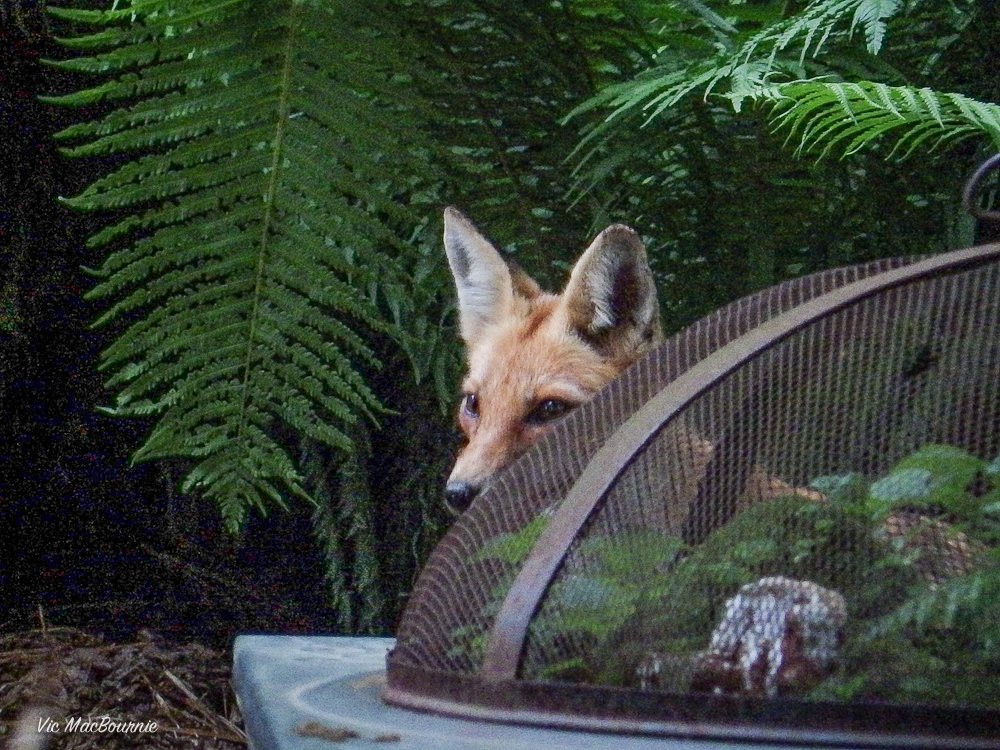DIY: Turn a birdbath into a succulent planter dish (step by step guide)
This DIY succulent hummingbird feeder is a fun gardening idea that is easy to build and beautiful to look at.
How to make a succulent dish garden (with a twist)
Here is a Do-it-yourself project that is both easy to create and results in a lovely succulent dish garden.
I’ve added a little twist by creating a mini photo studio with the addition of a small hummingbird feeder. All you need to complete the project is an old bird bath, some cactus soil, crushed clay stone and a small hummingbird feeder.
The project can be completed in less than an hour and will surely brighten up your backyard and add a great spot to photograph hummingbirds coming to your garden.
Succulents have certainly become popular recently. Here I have used a series of hens and chicks to make the project more hardy to stand up to our cold winters.
The popularity of succulents, however, is for good reason. Today’s succulents are outstanding. Large, small, colourful, tiny, easy to grow and even easier to maintain.
After all, the plants really don’t need a lot of care. Plant them in gritty, well-draining soil mixed with a little stone or pea gravel. Water them in extreme drought if necessary otherwise, just let them take care of themselves.
So with all this in mind, and with an old leaky bird bath sitting empty in the yard, I figured it was a good time to create one of these popular planters.
We’ve had the planter for several years and, besides replacing some of the succulents last year after a brutally cold winter, it has become a focal point along our pathway. I can’t say that it has attracted many hummingbirds over its time, but I’ll keep experimenting with different hummingbird feeders to find one that keeps them coming back.
This small round hummingbird feeder fits the succulent dish perfectly.
I happened to have the small hummingbird feeder designed to teach the tiny birds to eat out of your hand.
Converting birdbath into succulent planter
The project was simple and involved just a few items that I had around the house, and an electric drill.
1) First, I drilled about five holes through the bottom of the fibreglass bird bath to allow good drainage.
2) Then, add pea gravel in the middle area where the hummingbird feeder sits.
3) Next, surround the pea gravel with store-bought cactus soil and mix it with pea gravel to keep it loose and well draining.
4) Now it’s time to plant the succulents around the edges of the bird bath, mixing large and small.
5) I added some sedum that was already growing in the garden
6) I also had a curved wire that looked perfect as a hummingbird resting stop, so that was placed in the container but far enough from the feeder not to interfere with any hummingbirds that might be feeding while in flight.
7) I filled the little hummingbird feeder and placed it in the middle of the succulent container.
8) Finally, red chipped clay stone was placed over the soil as a mulch and a nice clean backdrop for the succulents. The stones help to keep water from splashing up dirt onto the succulents and gives the whole container a more desert feel.
How to care for a succulent dish (birdbath) garden
Caring for a succulent dish – in this case a birdbath – is simple. Succulents do not need a lot of water. In fact, too much water would be the main reason for their demise.
Think desert landscape and you’ll know how much you’ll need to water your dish. I rarely water our succulent dish. Instead, allowing our summer rains to get the job done with the occasional watering works well.
Providing good drainage is probably the most important step you could do to ensure the survival of the plants.
Ours is planted is an area close to the house that gets mostly morning sun into early afternoon.
For more on gardening on a budget, check out my in-depth article here.
Gardening on a budget links
Ten money-saving tips for the weekend gardener
DIY Bark Butter feeder for Woodpeckers
DIY reflection pond for photography
Click & Grow is ideal for Native Plants from seed
Remove your turf and save money
Hiring students to get your garden in shape
If you are interested in backyard birds, please consider signing up for my backyard birds newsletter. The sign-up page is at the bottom of my homepage. Not only will the newsletter provide in-depth articles on attracting, feeding and photographing backyard birds, I am also working with local artisans to provide discounts on incredible bird-related feeders, houses and other goodies backyard birders will love. In addition there will be regular giveaways , including gardening books and birding items.
This page contains affiliate links. If you purchase a product through one of them, I will receive a commission (at no additional cost to you) I try to only endorse products I have either used, have complete confidence in, or have experience with the manufacturer.
A front garden landscape design for the Pacific Northwest
Alexa DeBouef Brooks’ natural garden design complete with a plant list for this Seattle based front garden.
Acid-loving plants put to the test in small Seattle garden
This small Seattle front garden design plan by Alexa LeBouef Brooks puts native acid-loving plants to the test.
The Seattle area landscape designer first removed what was once a grass lawn and then had to deal with two very large and established cedar trees that were already on the property and had, over the years, turned the soil in the front garden acidic.
The design is installed in a neighborhood just outside of Seattle and very close to the University of Washington.
Alexa explains that the site is a small front lot with two very large and established cedar trees, one on either side of the garden.
Her goal was to create a natural, sustainable garden that both looks good year-round and is able to deal with changing environmental conditions associated with climate change in the future.
“You are limited in what you can plant underneath our Northwest conifers because they demand every drop of water available and make the soil very acidic.”
All the plants included in the design are acid loving plants and should establish well in the area. The House is East facing but gets adequate sunlight throughout the day.
The client wanted this garden to be an homage to a best friend who had recently died.
(Be sure to click on the link here for more on Alexa LeBouef Brooks and Understory Gardens.)
Also, if you are interested in native plants, be sure to check out my post on Gardening with Native Plants of the Pacific Northwest.
Alexa explains that for years the friends had planned on creating a native garden together.
“I feel honored to have been a part of this project, and help the clients vision come to life."
Below is a chart showing the plants Alexa used to create the garden. On the left are the number of plants and on the right is the name of the plants.
Above is a plant guide for the garden with the numbers listed to the left of the plant’s name.
Alexa LeBouef Brooks is a young landscape designer in the Seattle area who is using her passion for native plants along with her background in fine art to create exciting natural and woodland gardens.
She recently told Ferns & Feathers that the “development of my style of gardening grew from my desire to always be connected to the natural beauty I spent so much time in as a child. Although I embrace multiple garden aesthetics, the native and natural style of gardening keeps me rooted in the land I call home.”
Through the excellent work of the Seattle-based, non-profit organization called Plant Amnesty, many of Alexa’s clientele are already aware of the importance of protecting the ecology of the area.
The organization’s focus is to educate the greater Puget Sound area on proper pruning, responsible gardening and land preservation.
“I find that most clients who seek gardeners and designers through Plant Amnesty have a shared interest in maintaining the integrity of our delicate ecology and environment. Even outside of my Plant Amnesty clients, when a potential client sees my business name and website, they are anticipating a particular style of gardening from my work. Most are open to the suggestions I make when designing their gardens and plugging in additional plants to an existing design as well as garden maintenance methods,” Alexa explains.
Changing the way we garden is important to Alexa. Climate change is an ever increasing problem in the Pacific Northwest as well as elsewhere and Alexa is passionate about designing and installing gardens that will meet the future needs of her clients.
Issues around water conservation and installing plants that can not only deal with the increasingly hotter summers Seattle residents face, but the colder winters, are an important part of Alexa and Understory Gardens’ approach to the new challenges on gardening in the Pacific Northwest.
If you are on the lookout for high quality, non-GMO seed for the Pacific North West consider West Coast Seeds. The company, based in Vancouver BC says that “part of our mission to help repair the world, we place a high priority on education and community outreach. Our intent is to encourage sustainable, organic growing practices through knowledge and support. We believe in the principles of eating locally produced food whenever possible, sharing gardening wisdom, and teaching people how to grow from seed.”
Plant list for Seattle front garden design plan
Below is a list of the plants used in the garden in case the chart is difficult to read
1 Ribes sanguineum (Flowering Currant)36Oxalis oregana (Redwood Sorrel)
3 Polystichum setiferum (Alaska Fern)
9 Cornus se. 'Kelsey' (Kelsey Dogwood)
2 Dicentra 'Gold Heart' (Bleeding Heart)
6 Erigeron glaucus 'Bountiful' (Seaside Daisy)
5 Mahonia nervosa (Cascade Oregon Grape)
13 Sisyrinchium 'Rocky Point' (California Blue Eyed Grass)
11 Tellima grandiflora (Fringe Cups)
2 Oreostemma alpigenum (Alpine Aster)
4 Adiantum pedatum (Northern Maidenhair Fern)
7 Blechnum spicant (Deer Fern)
3 Helictotrichon se 'Sapphire' (Blue Oat Grass)
24 Cornus canadensis (Bunchberry Dogwood)
5 Heuchera cylindrica (Alpine Alumroot)
2 Balsamorhiza sagittata (Arrowleaf Balsamroot)
2 Vaccinium ovatum (Evergreen Huckleberry)
1 Rosa nutkana (Nootka Rose)1Arctostaphylos d 'Howard McMinn' (Manzanita)
Japanese inspired garden: Six elements to success
Japanese-inspired gardens are meant to look simple but are, in fact, highly designed, nature-inspired landscapes. Stone, water and plants form the structure of a Japanese garden with Japanese Maples, small evergreens and moss adding life to the design.
Finding serenity in a Japanese inspired woodland
I’ve always loved the peacefulness a Japanese garden evokes.
They seem so simple, yet, in reality, are highly thought-out designs that reflect the natural world. This appearance of simplicity hides what often is the meticulous placement of elements in the garden.
The main purpose of the Japanese Garden is to create a feeling of serenity and nature. A well designed Japanese garden strives to remind us of a natural landscape, but, in fact, is a carefully controlled landscape highly designed and maintained. They are nature-inspired, but it’s unlikely you will ever find them growing naturally. But that doesn’t mean they don’t evoke feelings of some of your greatest memories of wandering through the woodlands and coming across a beautiful moss-covered grove with large boulders protruding from the ground.
For more suggestions and some of my favourite garden things, be sure to check out my Favourite Things post.
Three elements make up the Japanese garden: Stone forms the structure of the landscape; water which gives it a life-giving force; and plants that provide what little color and changes the gardens provide throughout the seasons.
With all this in mind, I embarked on my Japanese-inspired garden.
If you love Japanese gardens and want more information, be sure to check out my post on Using Japanese Maples in the landscape. For more on the majesty of a mature Japanese Maple. Weeping Japanese Maples for landscapes big and small.
The Japanese-inspired garden in late spring with the blue Fish In The Garden moving through the plants.
The plan was to create a garden that would hide the fact that our home’s garage was long ago converted into a family room. Up until the garden was installed, the driveway’s blacktop came right up to our family room where the garage doors were once located. It never looked right to me and emphasized the garage conversion. So, by reducing the length of the driveway by adding large boulders, pea gravel and square cut gray flagstone, we were able to not only create the Japanese-inspired garden, but hide the fact that the family room was once a garage.
Three Japanese maples, the large boulders surrounded by pea gravel, a fern, moss and a bird bath combine to create an area that allows the primarily woodland garden to showcase a separate japanese-inspired garden area.
Key Components of a Japanese Garden
Adding Japanese garden art helps to create the mood of the garden.
1) A single large boulder or several large boulders (depending on the size of the garden) form the basic structure of a Japanese Zen Garden. Stone in a Japanese garden represents longevity and the forces of the nature. They anchor the garden to the ground and give it its specific personality. They should always be buried in the ground to look like they are emerging from the sand or stone they are on. Stones are laid out depending on their shapes and sizes. Their placement is key to creating a cohesive look. Look for boulders that are different in size and shape. A bonus is if you are able to grow moss on the boulders to give them a lovely aged look.
2) Pea gravel or sand surrounding the boulder(s) is another structural element. In zen gardens, it represents water, or, like the white space found in Japanese paintings, emptiness and distance. They are perfect places for meditation. In Zen gardens, the pea gravel is meticulously raked to create the illusion of waves surrounding an island of stone.
3) Incorporating evergreens (often pine trees) not only gives the garden year-round interest but they add a sense of permanence. Preferably, the evergreens should be smaller, slow-growing specimens that can be trimmed and either given a bonsai look or kept on the small side. The large boulders are the perfect place to display bonsai specimens either growing in pots or in pockets carved out of the boulders.
4) A water source is another important garden feature. It is said to represent renewal, calm, wonder and continuity in the garden. Everything from a small on-ground stone pool to an electric fountain or a bird bath can be used. There are many alternatives available which can either be created or bought commercially. Every effort should be made to keep and commercial products in keeping with the Japanese theme.
5) A beautiful Japanese Maple (or several) can either become a focal point or used as smaller trees in the landscape. Their natural form complements the garden style and they can be used as bonsai.
6) Statuary really helps to bring the Japanese theme into the landscape. Sculptured in stone, the Yukimi-gata lantern, sometimes called the snow lantern, was originally intended to guide visitors during evening events. Its light was also considered the light of knowledge clearing away the clouds of ignorance. Praying Jinzu statues positioned in strategic areas will delight garden visitors.
The Japanese-inspired Garden includes large boulders that provide a strong foundation and a mature Japanese Maple planted more than 20 years ago.
Keep garden proportions in check
Keep garden structures such as pathways and plantings in proper size relative to a human body.
Feel free to use a variety of plant sizes to keep the eye moving around the space.
Balance large trees with gradually smaller trees and shrubs to bring them into scale.
My Japanese-inspired garden plan was given a major boost when a neighbour over estimated the number of boulders needed for a large landscape project and I was able to nab 11 massive limestone boulders. Four of the boulders formed the structure of the Japanese-inspired garden. The rest were used as a retaining wall for the driveway. But they all worked together to provide the foundation of the Japanese garden.
Adding to the basic structure was a large Japanese Maple I planted the year we moved into the house twenty-plus years ago. Back then, Japanese Maples were just beginning to gain in popularity in this area of Southern Ontario. Time has turned the sapling into a beautiful, full-size multi-stem specimen.
With the basic structure in place, we placed square-cut, blue flagstone through the space and moved yards of river rock and pea gravel into place around them. The flagstones provide a path from the front of the home to the backyard.
A small cutleaf weeping form of Japanese maple backed by large grasses took it’s place on the opposite side of the larger mature specimen.
Under the mature Japanese Maple, I’ve planted variegated Japanese Forest grass, a clump of epimedium, a ghost fern and a couple of very small blue hosta. The connected garden that stretches across the front works as a transition from the Japanese-inspired garden to the Woodland garden that dominates the rest of the property. The front garden contains several small fountain grasses, a large clump of Japanese Forest grass to complement the clumps around the mature Japanese Maple and a large horizontal blue spruce ( picea pungens Dietz) all on a black mulch backdrop.
Where the stone meets the garden, just beside a square birdbath water feature, we’ve added three small Jinzu praying on a bed of moss. The three statues represent our small family – me, my wife and our daughter.
It’s also important to include evergreens into the design. We have two – the horizontal blue spruce and a serbian spruce growing in a container on the square-cut flagstone pathway.
Low-voltage lighting allows us to enjoy the garden both day and night.
This page contains affiliate links. If you purchase a product through one of them, I will receive a commission (at no additional cost to you) I try to only endorse products I have either used, have complete confidence in, or have experience with the manufacturer. Thank you for your support. This blog would not be possible without your continued support.
Welcome the urban fox: The ultimate rodent controller
Urban foxes are common throughout North America and are important predators in the control of rodents in our woodland gardens. Here are tips to help gardeners encourage them and help them survive and prosper in our gardens.
Do fox control mice and rats?
Our first fox sighting came on Day 2 after moving to our new, old home some 22 years ago.
My daughter and I were out for a stroll in the woods surrounding our home when a fox appeared on the path right in front of us, looked at us and went on its way without a care in the world.
Not long after, a fox visited the backyard bird feeder where it scored a black squirrel pretty much on a daily basis for several weeks. Every morning at breakfast, my daughter and I would see the fox appear out of nowhere, chase down a squirrel across the yard, catch it, and with a hard shake immobilize it, before carrying it back to its den no doubt for its kits.
Needless to say our squirrel population was kept nicely in check with the Red Fox around.
While squirrel is certainly on their list of preferred food, there is no question that mice and other rodents make up a high percentage of a fox’s diets throughout the year, especially in urban areas. Studies show that urban fox feed predominantly on small mammals, particularly rodents like rats, mice and voles. Rabbits are also among their preferred food choice. Together, these can make up about 50 per cent of their diet.
Our cute little neighbourhood fox taking a rest on a driveway before an evening of hunting. July is a difficult time for fox, and it shows here in the fox’s skinny body .
Ever heard a fox scream. It’s terrifying but fascinating. For more on why foxes scream, check out my post here.
But then they pretty much disappeared for years. Foxes became rare around these parts, apparently decimated by mange.
But they’re back and I couldn’t be happier.
Not sure our local rodent population is as excited about their return as I am, however. Urban foxes help control small mammals, particularly rodents including rats, mice and voles. Squirrels and rabbits are also on the menu to a lesser degree.
This alone is reason enough for gardeners to love these little canines.
Check out my earlier articles on Why do Foxes Scream and Why Foxes steal from our gardens
We have been noticing foxes in the area again for the past two years. This winter I noticed a fox at a neighbour’s property in mid winter. It greeted my dog and I after we returned for a walk. It was in January, about the time of peak mating period. This is about the time these usually quiet little fellas become quite vocal often screaming and barking as the males roam the neighbourhood looking for partners.
When do fox begin breeding?
By February the females are pregnant and begin clearing out den sites in and around our gardens (under decks, sheds and large tree stumps).
Cubs are usually born mid-march, totally deaf, blind and in need of their mother’s constant warmth. By April the cubs emerge from their dens and start eating solid food. By May the den is an active place, especially at dawn and dusk when the parents are busy bringing the growing kits food.
This photo shows on of our neighbourhood foxes killing its prey after pouncing on it in the garden. It’s not a pretty site to watch but our gardens can be good sources of food for neighbourhood foxes.
What do foxes eat?
Foxes are actually extremely opportunistic, omnivorous predators. Besides rodents, Fox will happily feed on invertebrates, particularly various beetles, butterflies and moths as well as earthworms, grasshoppers and crickets. And those pesky garden snails and slugs are also on their menus. Spiders too, are on their list of good eats.
To a lesser degree, Fox will eat frogs and small snakes.
Birds also make up a large part of a fox’s diet, especially in the spring and early summer when foxes are feeding their hungry cubs.
Some foxes have even been known to climb trees in search of prey or fruits and nuts.
Fox kits hanging out a their roadside den.
In an urban garden, there is no doubt that bird feeders provide the perfect opportunity for a fox to easily satisfy most if its nutritional needs. Everything from rats and mice to squirrels, chipmunks and a host of birds gather around the feeder, often letting their guard down just enough to become dinner for the fox.
Being the ultimate opportunist, Fox will feed on whatever is abundant in your area. Whether that’s bugs or rats, the fox will play an important role in keeping populations in check.
Do fox eat worms?
A 1980 study showed that worms played a major role in a cub’s diet during August and September as the cubs, born in March, begin using their own hunting skills to catch worms. The study found that during some months, earthworms may account for more than 60 per cent of a fox’s calorific intake. The study estimated that it would take approximately 120 worms in a night to meet a fox’s caloric needs.
Do fox eat larger animals than mice and rats?
In other areas, hedgehogs, deer, otter, European badger, opossum, raccoon, porcupine, and even wild boar are on the menu. Fox remains have also turned up in their diets as have domestic cat, but many of these animals are expected to be the result of scavenging.
Do fox eat plants and berries?
It’s not all about meat, however. Fox will happily eat a range of plant material, especially fruits, both wild and cultivated. ( I have noticed that my blueberries are disappearing just as they begin to ripen.) Blackberries, raspberries, cherries, apples plums, grapes and even nuts are important foods for the fox as winter approaches. Studies show that fruit accounts for about 10 to 30 per cent of the diet.
And not unlike our domestic canines, grasses, sedges and various tubers find their way into the diet of most foxes.
For a more detailed look at the fox diet, go to Wildlife Online.
The main picture that accompanies this blog was taken at the end of July and it shows. At this time adult fox are often showing the strains of three months of having to provide for their growing cubs. It’s during this time that the fox begin to slow the feeding of their cubs and actually start competing for food with them. This is a dangerous time for the young foxes that are often forced to go out on their own to explore and fend for themselves.
If they survive, they begin to put on their winter coats in September and October in preparation for a long, hard winter. Male cubs leave the den area in late fall, early winter to look for their own territories.
And it all begins again.
How can the Woodland gardener help foxes?
It’s clear that providing a natural area, free of insecticides, that provides a combination of food sources including small rodents, fruit and nuts, while also providing water sources and potential den sites, is a goal all woodland gardeners should strive for. The brush pile we talked about in an earlier post becomes a hunting ground and a potential denning site for fox.
On-ground water bowls become a life-saving source of fresh water during a heat spell. Our humus-rich soil provides homes to insects and a source for earthworms. Leaving debris around the garden like branches and leaves give rodents like mice a place to live and, in return, a source of food for predators such as fox, owls and even snakes.
And, if our properties can only provide a few of these resources, we can provide a green island in a neighbourhood of green islands where a predator like the fox can exist.
We can be the ark (Acts of Restorative Kindness) that Irish landscape designer Mary Reynolds urges in her book The Garden Awakening and on her website, even if our gardens are small islands in a sea of islands.


